As the founder of a dog rescue shelter with extensive experience in rescuing and caring for Huskies, I’ve become quite attuned to their unique ways of communication, particularly through their ear positions.
The question of “What Do Husky Ear Positions Mean?” is one I’ve explored deeply, learning to interpret the silent yet expressive language of their ears.
So, here’s the short answer…
Husky ear positions can mean many emotions and intentions. Erect ears indicate alertness or curiosity. Ears laid back suggest submission, fear, or friendliness. Sideways or relaxed ears denote calmness or contentment.
Understanding these positions helps interpret a Husky’s feelings and responses.
Huskies are not just beautiful; they’re expressive, using their ears to convey emotions, desires, and even health cues. As a Husky owner, understanding these ear signals can greatly enhance your relationship with your pet.
In this post, I’ll share my insights into interpreting Husky ear positions, from alertness to relaxation and everything in between.
Let’s decode the silent messages conveyed by these enchanting dogs’ ears!

Why Do Huskies Move Their Ears?
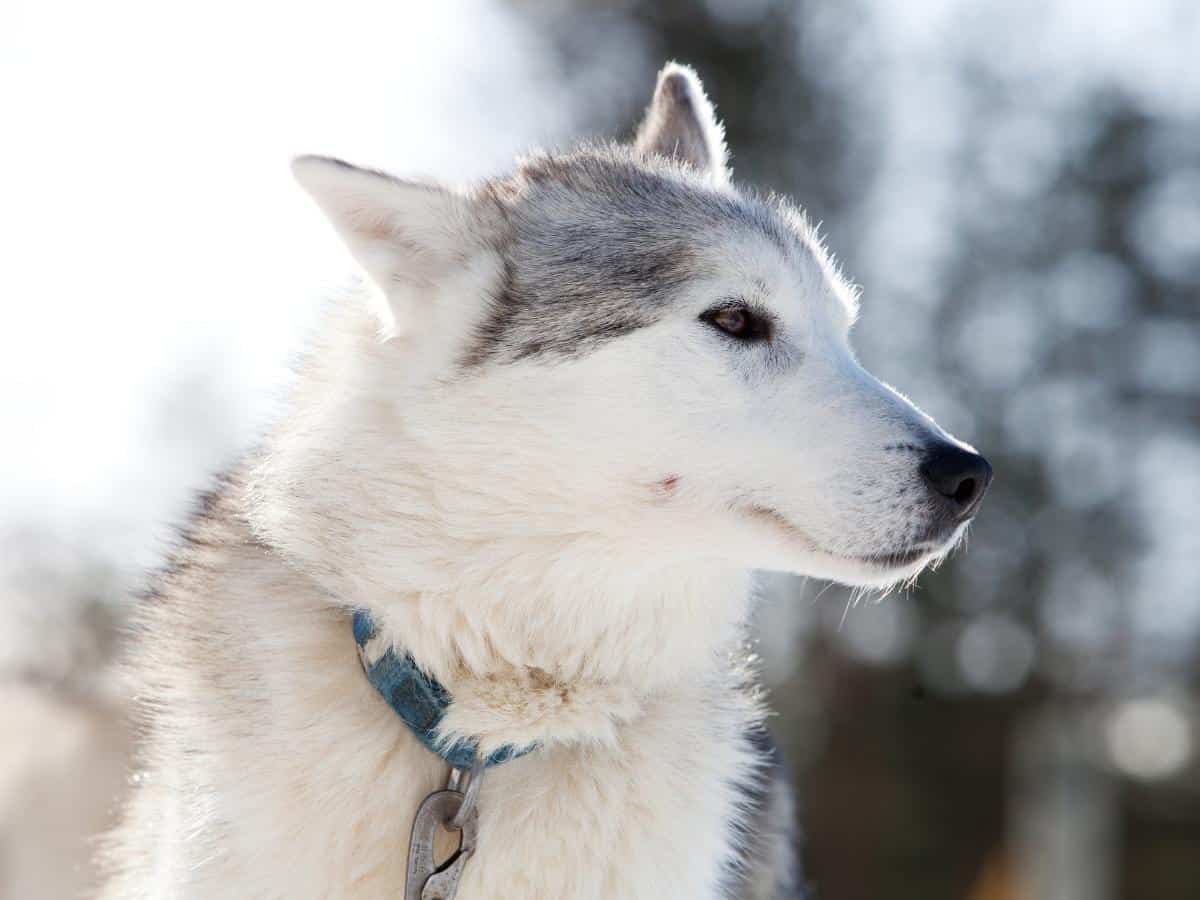
Before we get into specific Husky ear positions that indicate different emotions, we must address why dogs move their ears.
Dogs’ ears, unlike human ears, are controlled by voluntary muscles. Simply put, their ear movements aren’t involuntary reactions but instinctual attempts at communication.
Huskies move their ears to hear better and indicate interest, submissiveness, or hostility. Several subtle movements indicate more complex emotions, and sometimes, various emotions overlap regarding their corresponding ear position.
You should look at your dog’s ear position alongside other body language and behavior cues in the context of his environment when deciding why he behaves a certain way.
The following sections will review the general possibilities for each of your Husky’s ear positions.
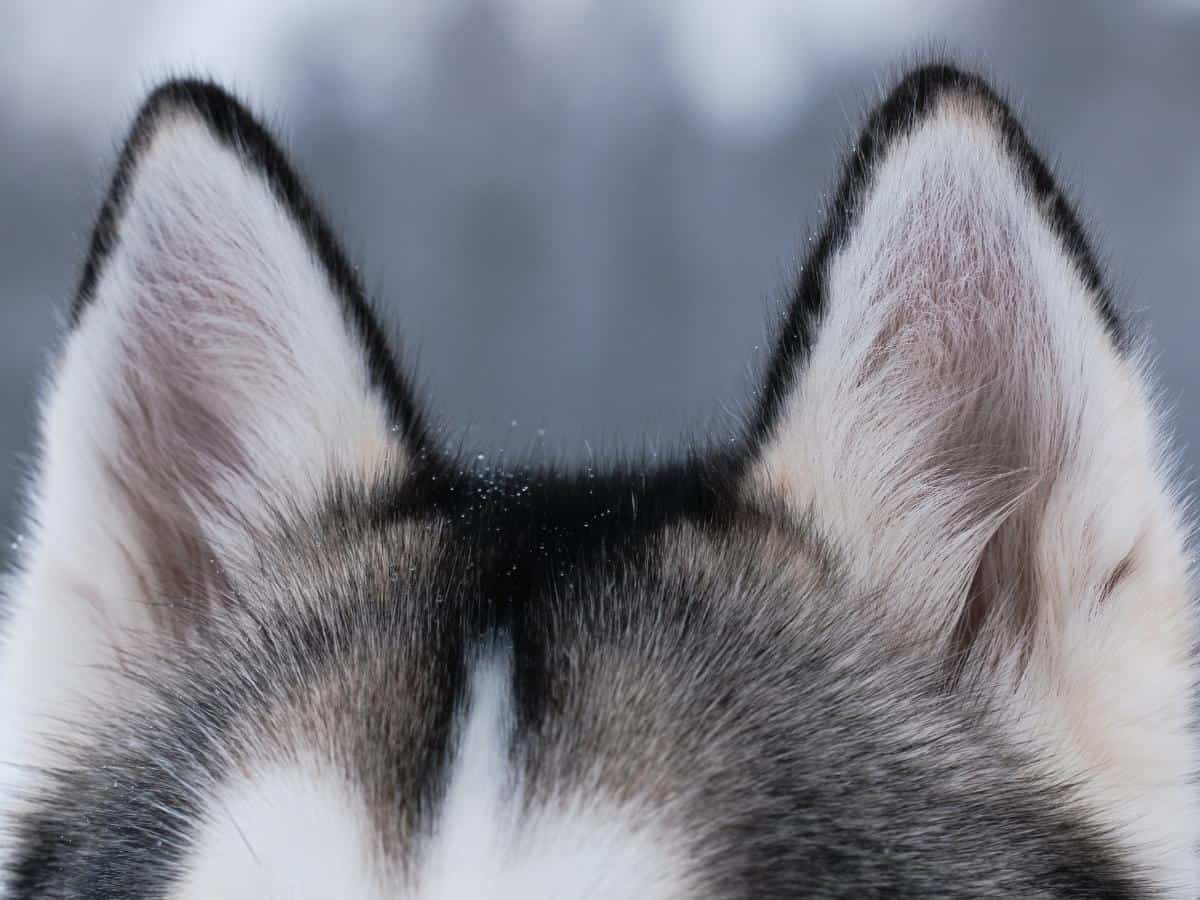
What Makes a Dog’s Ears Stand Up?
Since most Huskies’ ears are erect and pointy, yet others are floppy, one can wonder what causes this difference.
A Husky’s ears stand up because of robust cartilage and strong ear ligaments. A prominent feature of the Husky is pointy, triangle-shaped ears.
A puppy’s ears are floppy as the cartilage is still soft. However, their ears should be erect once teething is finished at around five months.
Ears In A Neutral Position
You shouldn’t confuse standing ears with pricked-up ones, which are prominent stiffening and have more to do with the canine’s mood.
When your Husky is relaxed, his ears will sit in a neutral position. A neutral position means the ears are not pricked forward, hanging down, or pinned to his head. For Siberian Huskies, it is natural for their ears to be standing upright.
So, how do you decipher a neutral position?
You can tell a chilled-out Husky with neutral ears by observing other body language cues.
For example, signs that a dog is at ease are a relaxed body posture, happily panting, a big, open mouth, a relaxed tail that is often wagging, and a relaxed, hanging tongue.
Pricked Ears
Since Husky ears aren’t typically floppy (aside from the exceptions discussed later in this article), you can barely notice the movement whenever their ears become pricked or attentive. Still, it is essential to know why Huskies prick their ears.
Huskies prick their ears whenever they are alert, interested, focused, excited, or curious about what they’re hearing.
Since sudden alertness is sometimes followed by canine aggression, Huskies’ ears also prick up when they’re about to attack if they feel endangered.
To determine whether your dog is alert or aggressive, observe other body language signs, such as growling, showing teeth, and sniffing.
Also, consider the dog’s current environment. Your Husky may merely prick his ears forward and tilt his head if he hears a cat outside or if you make a peculiar sound.
When a Husky pricks up his ears and looks around or sniffs, you can deduce that he is alert. You should tighten your grip on his leash.
This way, you can ensure he doesn’t suddenly become aggressive towards another animal or person. If the dog is growling, showing his teeth, or raising his hackles while his ears are pricked up, you should assume he’s in an aggressive state.
Please note that Siberian Huskies aren’t prone to aggression. However, they may show hostility if they are unsocialized, untrained, or previously neglected or mistreated.
This is through no fault of the dog, and only humans are to blame, as the dog just does not know how to behave and is showing signs of fear aggression.
Ears Changing Position
When your Husky’s ears are quickly changing positions and twitching back and forth, it means he is a little unsure of the environment and is trying to figure out what is happening around him by carefully listening to the sounds he hears.
You may also witness your doggo tilting his head from one side to the other. Overall, it’s pretty cute to watch, especially when you talk to them, and you can see they’re trying to figure out precisely what you’re telling them.
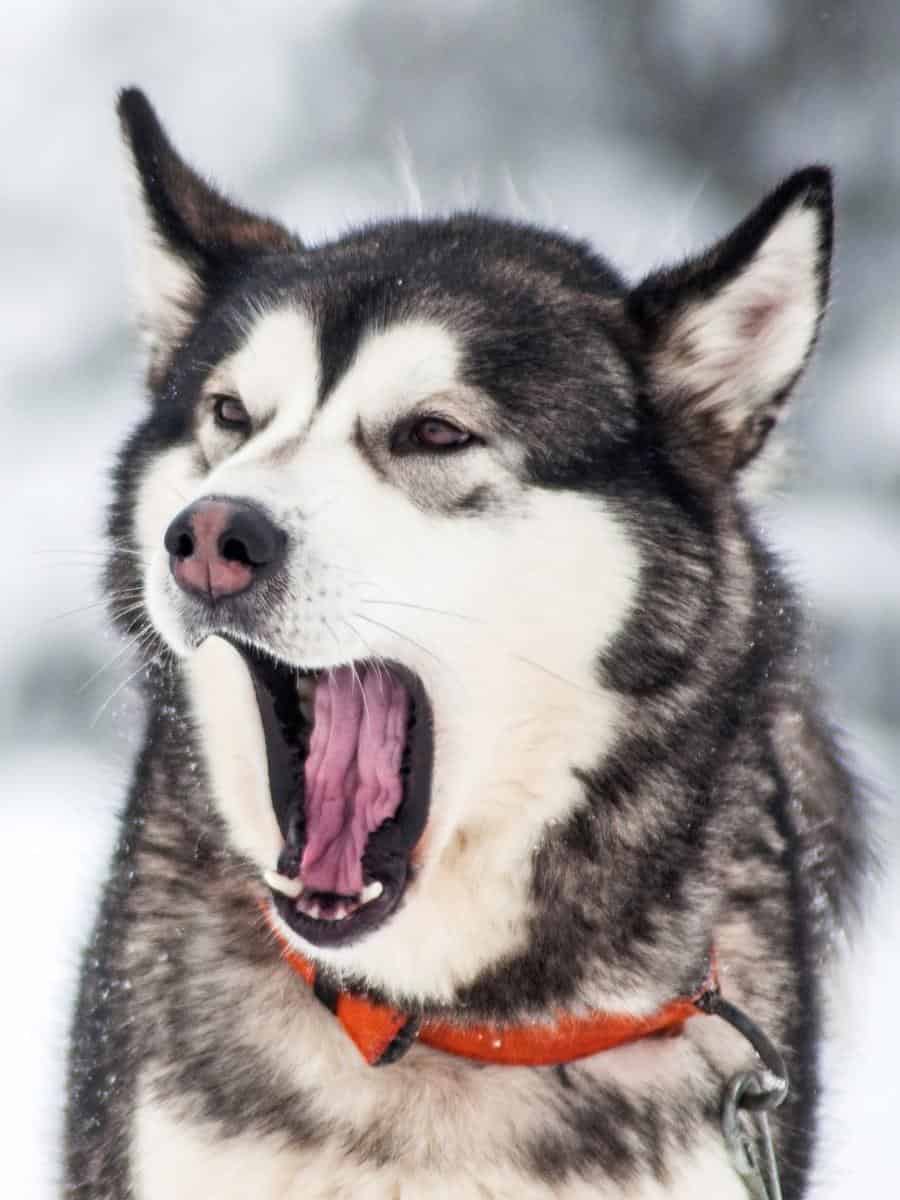
Why Do Huskies Ears Go Back? (Dropped or Pinned Ears)
Unlike pricked-up ears, this is a more subtle movement where your dog puts his ears pinned back and they are positioned tightly towards his head.
I’m not talking about extremely pinned-back ears, as this comes next and has a different meaning.
There’s a valid reason for this behavior.
Huskies put their ears back (dropped or pinned) as a sign of nervousness or submission. However, this ear position doesn’t ensure these emotions, as your dog can also bring his ears back when feeling happy and social. You should look at the head position, body, and tail for more clues.
If your dog displays submissiveness, his ears will go back, and he will lower his head. In some instances, the dog puts his tail between his legs, which results in the related figure of speech.
If other indicators are absent, but your dog’s ears are still pulled back, you can assume he is just in a social mood, especially if he has a loose or wiggly body.
In the photo below, Husky’s ears are dropped back. Is he nervous or happy?
This Husky is content as he sits nicely with a relaxed body posture. His mouth is open, and his tongue is hanging loose. He is not displaying any signs of being submissive or uneasy.
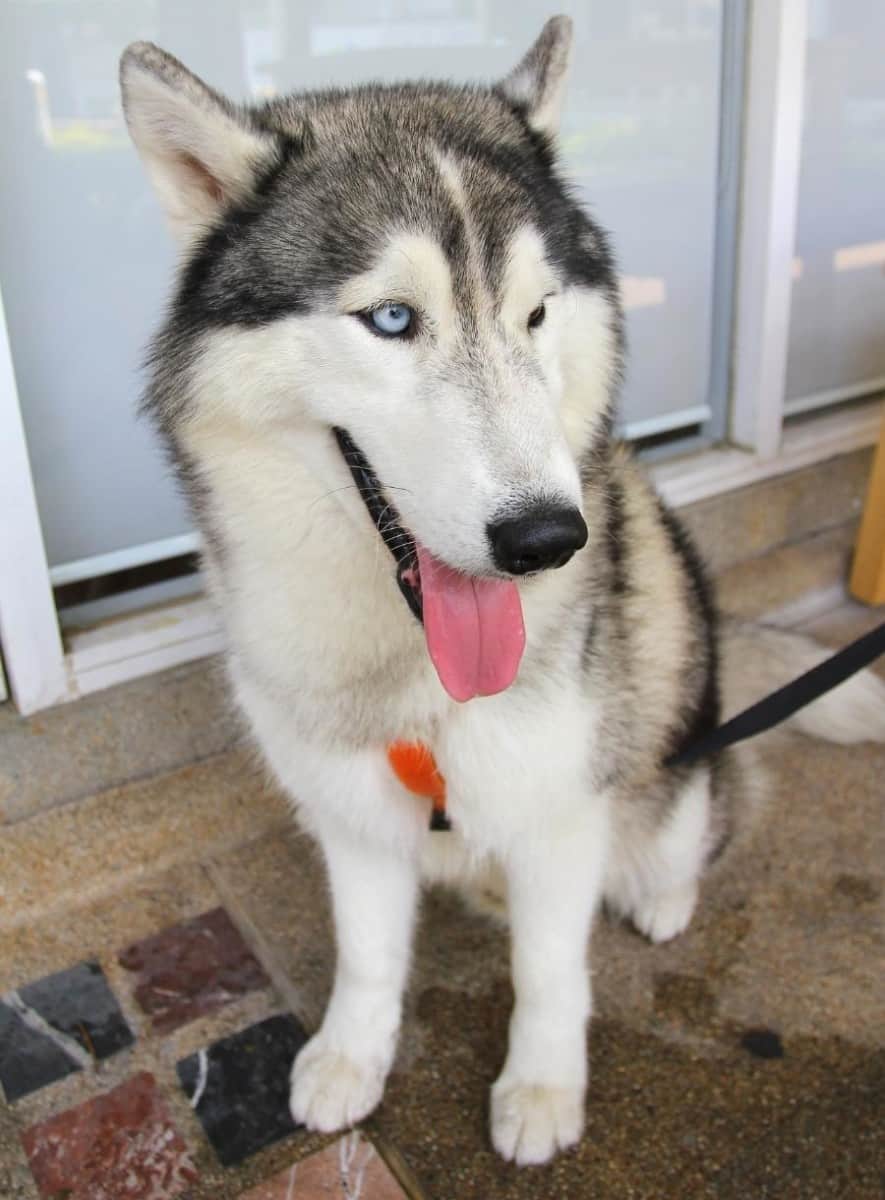
Why Do Huskies Put Their Ears Down? (Extremely Pinned)
Finally, there’s the flat ear position, where the ears appear extremely pinned back and held tight to the dog’s head.
Many people assume that this indicates that the dog is ill. This isn’t totally accurate; while sickness may be linked to the ear position, it isn’t always the case.
Huskies put their ears down (extremely pinned) when they are afraid. If your dog fears his environment, another person, or an animal, you will notice his ears flattening and pinned tight to the head.
Other signs are a hunched and stiff body, cowering, whimpering, bent legs, and tail between legs.
Check out the Husky in the below photo. His ears are down and extremely pinned flat against his head. He is cowering and trying to hide and is clearly anxious or afraid.
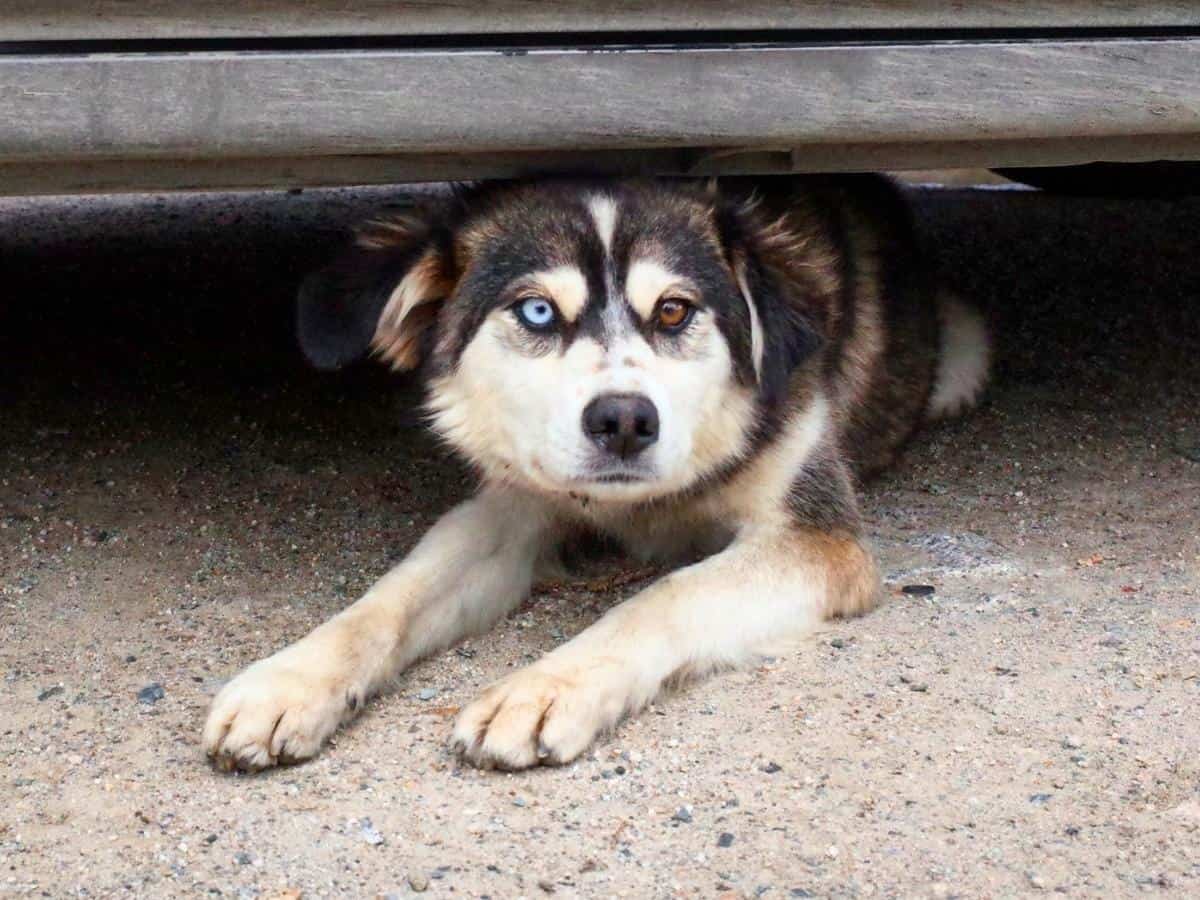
Husky Ear Positions Chart
Here is a roundup of dog ear positions and their meanings:
| Husky Ear Position | Meaning |
| Neutral (pointy, triangle-shaped) | Relaxed |
| Ears Changing Positions | Unsure or confused |
| Pricked/Attentive Ears | Alert, attentive, focused, curious |
| Dropped Back/Pinned Ears | Either nervous or happy |
| Extremely Pinned Ears | Fearful |
Responding to Your Dog’s Changing Ear Positions
Now that you know what Husky ear positions mean, let’s discuss how you should act whenever you notice such sudden shifts. The idea is to make your dog feel secure while keeping him under control.
How to Respond to Your Husky’s Pricked Ears
When your Husky pricks up his ears, you should prioritize this ear position above all others, as it can mean your dog is alert and may be about to become aggressive if he feels threatened, especially if he displays other body language.
Your Husky’s protective nature might prompt him to alert you to potential threats, sometimes resulting in false alarms.
If he pricks his ears, simply redirect his attention by changing your walk route or starting a new activity. Using treats to deter his alertness could unintentionally encourage more false alarms, so it’s best to avoid that approach.
How To Respond To Your Husky’s Ears Back
When your Husky puts his ears back, he is either submissive, nervous, or friendly. Again, look for other signs, but you’ll soon get to know your own dog’s body language.
Pay him more attention, show him the affection he deserves, and reward him with treats.
This ear position isn’t something to be concerned about. The only exception is if your Husky displays this behavior around most strangers, and you adopted him as a watchdog!
If that’s the case, you might need to bring him a sibling who is less of a social butterfly or get a German Shepherd!
Actions to Take When Your Husky Pinns It’s Ears
Whenever your Husky exhibits fear by flattening his ears and tightly pinning them to his skull, you must ensure you give him enough attention and talk to him in a soothing voice to reassure him and help him calm down.
If he acts this way around a particular path on your walk or before certain activities, you must consider whether teaching him to overcome those fears is worth it.
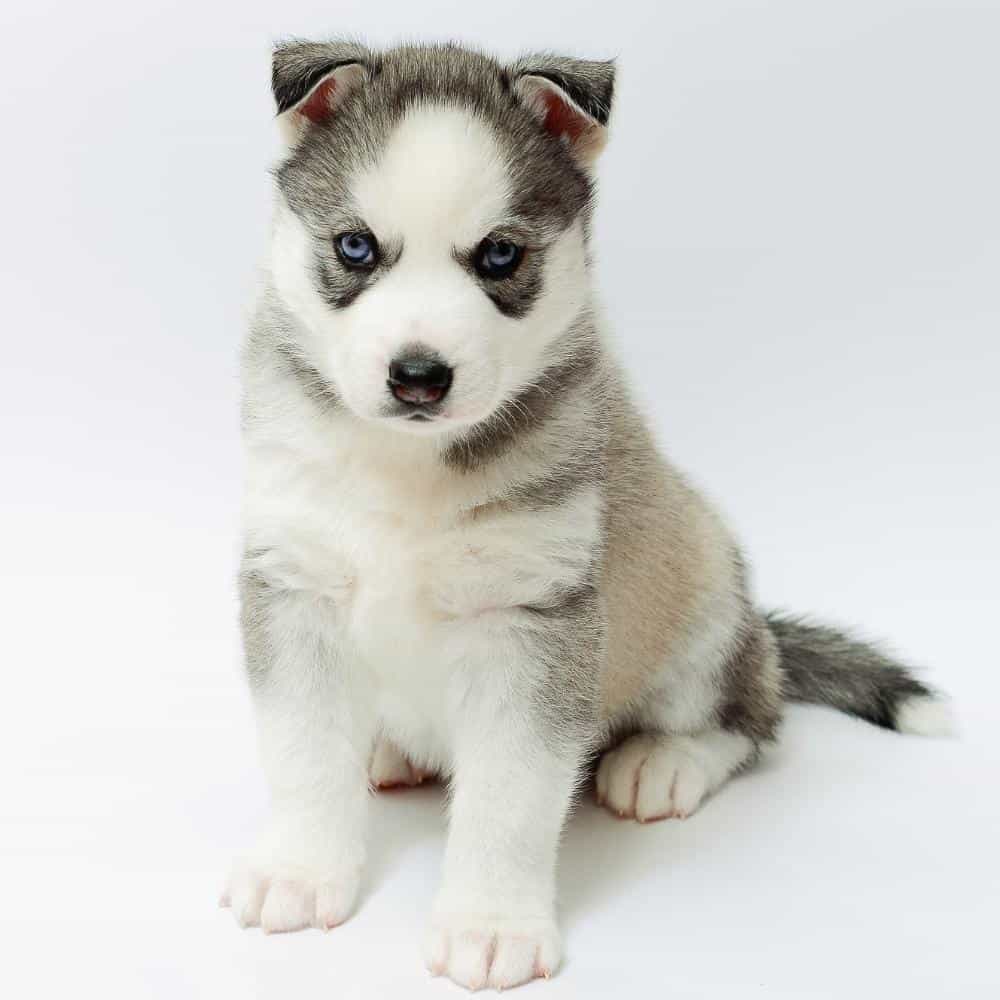
Why Does My Husky Have Floppy Ears?
If you love Huskies and have their classic look in mind, you might be worried about adopting a puppy and realizing that his ears are floppy.
But there’s no need to worry…
Huskies are born with floppy ears. Puppies’ ear ligaments in their ears aren’t strong enough to make them stand up, and the cartilage is still delicate, causing them to be floppy.
When Huskies are about five months old and have finished teething, their ears should be stood up.
Breed-defining characteristics are influenced by genetic variants, such as the Siberian Huskies’ pointy ears. When they pass the teething stage, their ears stand up as long as their genetics aren’t mixed, producing different ear structures.
Huskies with completely floppy ears are rare – those with partially floppy ears are more common. But if your dog is past twenty weeks and his ears are still floppy, it may be due to one of these reasons:
- Poor diet (check out the best diet for Huskies here)
- Medical condition
- Bite wound
- Fungal ear infection
- Inflammation of the ear
Or maybe your Husky isn’t purebred after all!
Talk to your vet if you are concerned about your pup’s ears not standing up after teething.
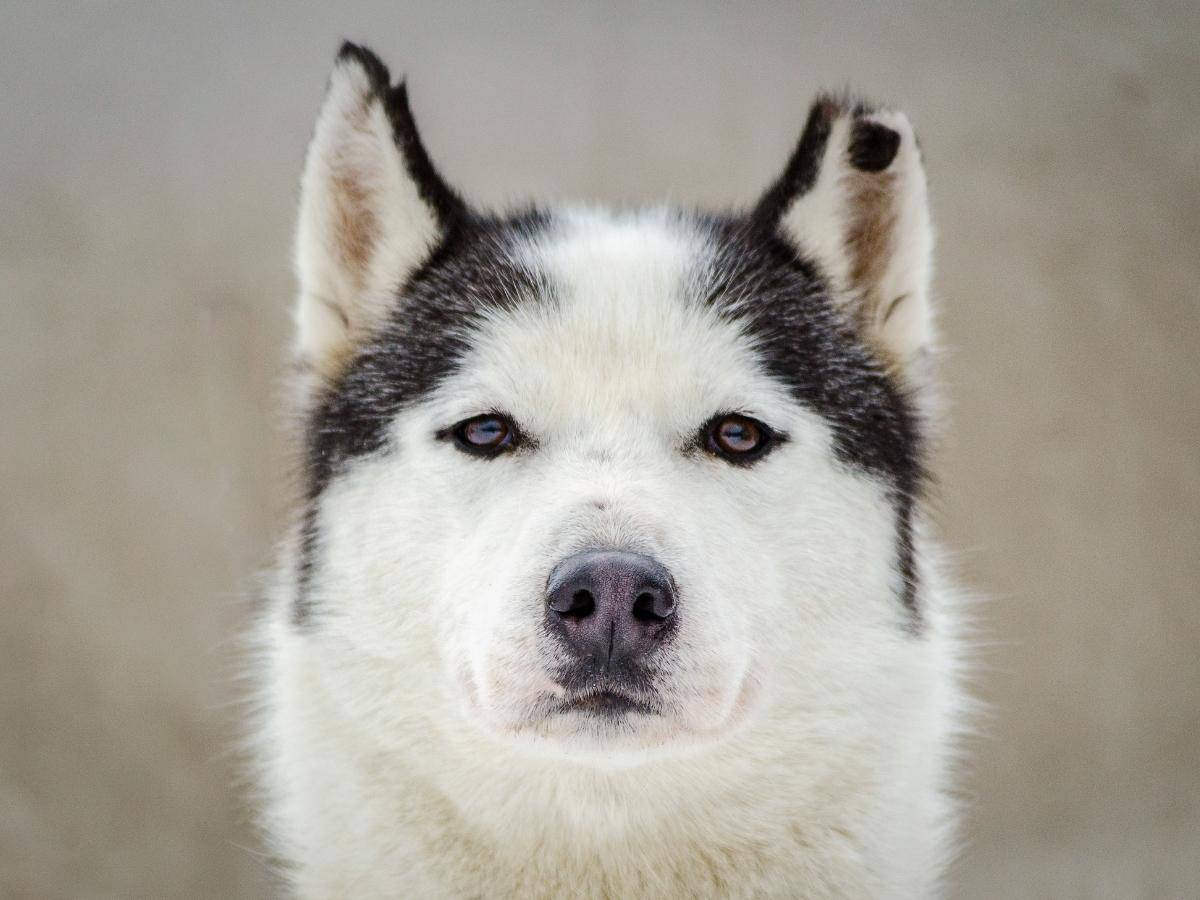
Final Thoughts
Huskies are intelligent and expressive, and their ear position often reflects their mood.
The key to understanding what your dog is telling you is to always look at his overall body language.





